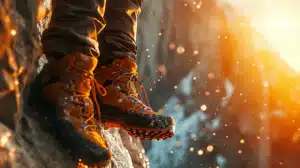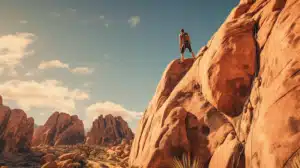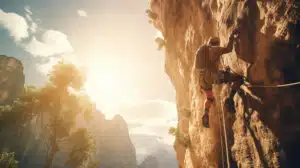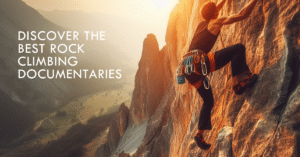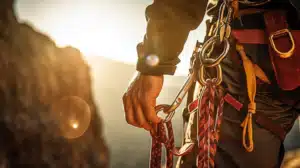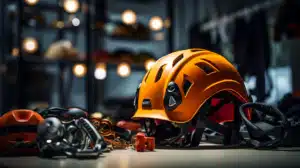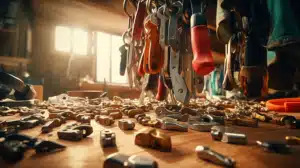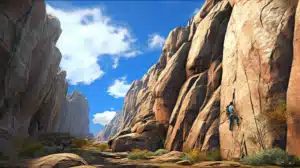Too many things have passed whilst my website has been “down for maintenance” which actually means it broke, and I didn’t know how to fix it! So I did what I do best, I tried to fix it, and in the process made it even worse. Finally I bit the bullet and started all over again, losing all my blog posts and content in the process, but at least I now have somewhere to post the new ones!
(if anyone knows how to resurrect my old posts, from a downloaded copy of my old wordpress site, then I would love to her from you)
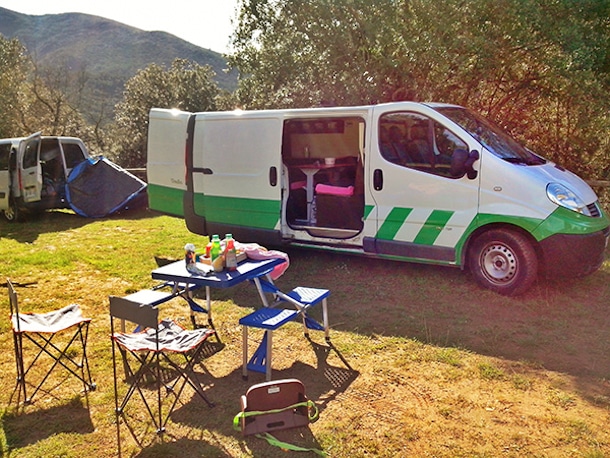
The new van out for its first run!
Since my last post I have been in England, then back to France. For 2 months we practically disappeared to transform our new camper, only coming out of hiding for a few hours training per day in our local climbing wall, Altisimo Grabels. We luckily (I say luckily as Caroline has passed too close to my head, one too many times with her power drill!) escaped for 10 magnificent days in Chile where I made my first ever international competition (and surprisingly, didn’t completely suck! Report here…), as well as discovering an incredible bouldering spot in the middle of the Andes, and the dangers of Pisco!
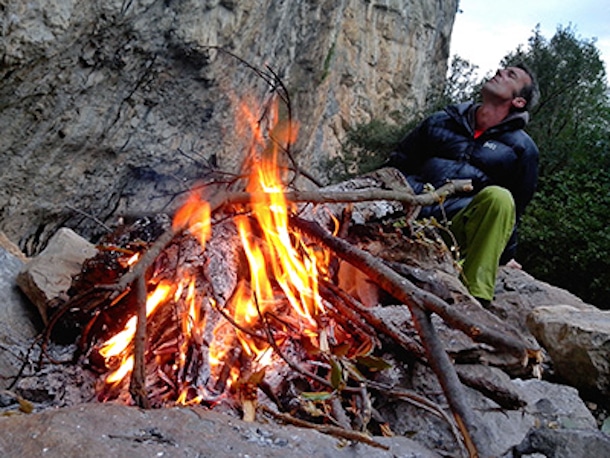
Bartho, our ever optomistic guide for Sadernes!
We finished the van (surprise surprise, its pink!) and took it for its first Test drive in Sadernes, Spain, which is a very developed spot (100’s of routes up to 9a) in a stunning location, 30minutes over the French border, that nobody seems to know about! (Caroline has wrote an article that should be in the mags soon…) We should have originally driven to Italy for a presentation in Alagna, but the weather forecast was terrible so we took a plane from Barcelona instead. Of course, we arrived in Italy and the weather was glorious… sods law! A little taste of perfect granite was all it took to convince us to come back. We flew back to Barcelona, climbed one day in Montserrat to sharpen our minds (4 bolts in 30m!) and started to drive back to Italy. It was a long way, but we arrived none the less, parked in the dark at the foot of the cliff, and woke up the next day to find everything completely wet!
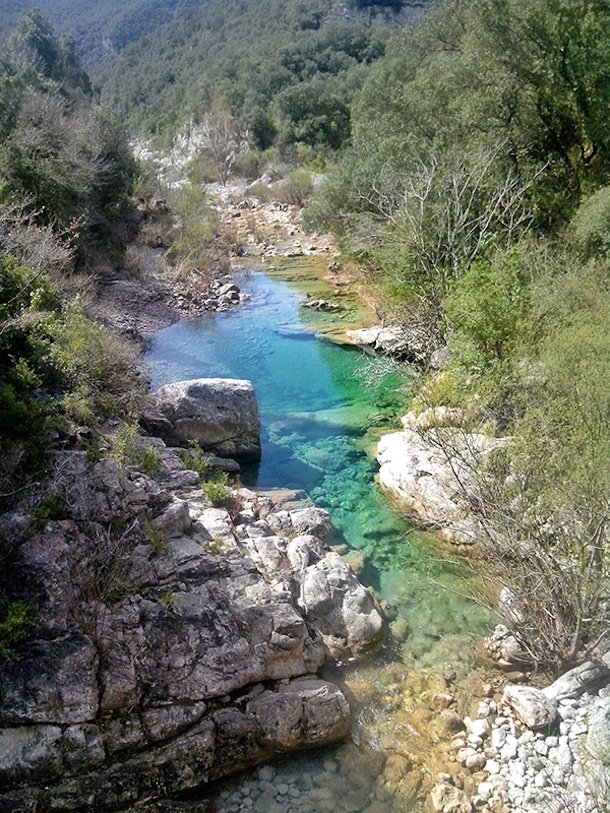
The tranquility of Sadernes!
Ok… breathe…
It seemed winter had come back to Italy, and the snow on the hills was a little too close for my liking. However, even snow would be better than heavy rain pounding on the van roof, soaking everything in sight. Boooooo hoooooo hoooooo! This is not quite what we had planned, but in situations like this you must search for the silver lining, however thin it may be – at least the van was watertight!
A distress call to our long suffering friend, Riky Felderer (link) brought hope in the form of Cipo, a supposedly perma-dry crag a stones through across the Swiss border. The crag was as promised, dry, and actually turned out to be pretty nice. We spent the day practicing our on-sighting on a selection of varied routes up to a rather tricky and crimpy 8a, entertained by a friendly group of Italians and Swiss who were also escaping the rain.
By the following morning the rain had stopped but the saturated cracks on our desired projects would need some time to dry completely. We made the short drive to Cadaresse, a cliff I know quite well and where one can usually find a dry route or two. I had never seen the place so wet, and on arriving we bumped into fellow Brit, Tom Randal, who looked like he had just about had enough of crappy Italian weather and was giving up and going home! Caro tried her project, the brilliant 8a+ of Grazie Riky, that she was hoping to climb on natural gear, but after a completely unexpected fall from a very wet sloper, she came down and we were also tempted to quit!
Still, I had carried my drill and bolts up to the cliff for a reason, and i’d be damned if I wasn’t going to make atleast one hole, or two. There was a beautiful corner I had been checking out for as many times as I had visited the cliff. Its the kind of feature that just begs to be climbed, the only problem was how to access it! Three possibilities existed, left, right and direct. They all looked hard, they all looked really hard, and I wouldn’t know which was best until I got up there.
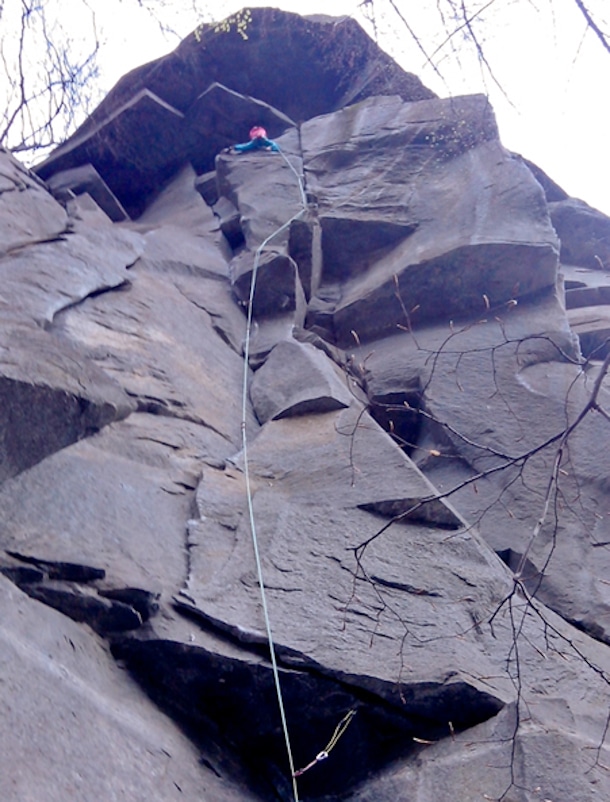
The learning process begins…
You see, we will soon be heading off to exciting places on the other side of the world, with the dream of opening new multi-pitch routes, equipped from the ground. Equipping from the ground is a style I was introduced to in Sardinia last year, and is something that really spoke to me. Combining the adventure (and often) danger of trad, with the “comfort and confidence” of climbing on bolts. Ground up bolting (in the style of the Italians – no top stepping here!) is simply free climbing new routes, placing a bolt whenever you rest on any aid. In this way, the climber will have the same experience as the equipper, making the same run-outs, dealing with the same exposure (with the obvious exception that the equipper will have the joy of sitting on hooks whilst he hauls up the drill and bolting gear, and places the bolt!).
In my experience, in the case of multi-pitch (where the routes may go for years without a repeat) ground-up bolting produces much better routes than those bolted on rappel. The simplest way to explain this is if a route has been climbed ground up, the terrain is possible in any condition, not only when it has recently been cleaned and chalked. Someone has been there first, on that exact same line and made the exact same moves, when the rock is in its worst possible condition. When a route has been opened from the ground, provided you have the necessary level(mental and physical) you can always climb between the bolts (something that is not true for routes equipped from the top – one very slopey, slabby, 8a+ tufa pitch comes to mind. Probably very easy when cleaned and chalked, but the living end with the 5 years tufa crozzle!)
And speaking about bolts, the position of bolts on routes climbed from the ground are often more logical, usually being reachable from good holds, as thes are where you will have placed your hooks. I don’t mind running it out through a hard section for 5 or 6 meters if I know I will be able to clip from good holds. The same cannot be said for the previously mentioned tufa of doom!
But enough of the logic… the realy “fun” of ground up bolting comes when you put the theory into practice, which brings me back to my story.
I could see three potential lines, the left, the right and the direct. All had the potential to work, but depended solely on the quality oif the holds, ie how juggy they are, something I couldn’t see from below. I decided to go for for the direct option first, as if it did turn out to be possible, direct is always better than not. Progress was slow and scary, but completely engaging – 4 hours passed without me realising it (sorry, and thank you Caroline). I found hooking on granite to be terrifying, as even though the rock was bullet hard, it lacked all the positive in-cut features I was used to from Limestone.
I was happy to realise that (in theory) the line I had bolted worked. In practice however, it became apparent that it would be very, very hard. In my short session I was able to hold the individual positions, but moving between them was more than I could manage. The line is there, waiting for someone with the necessary power and technique, and as an extra bonus it stays completely dry in the rain!!!
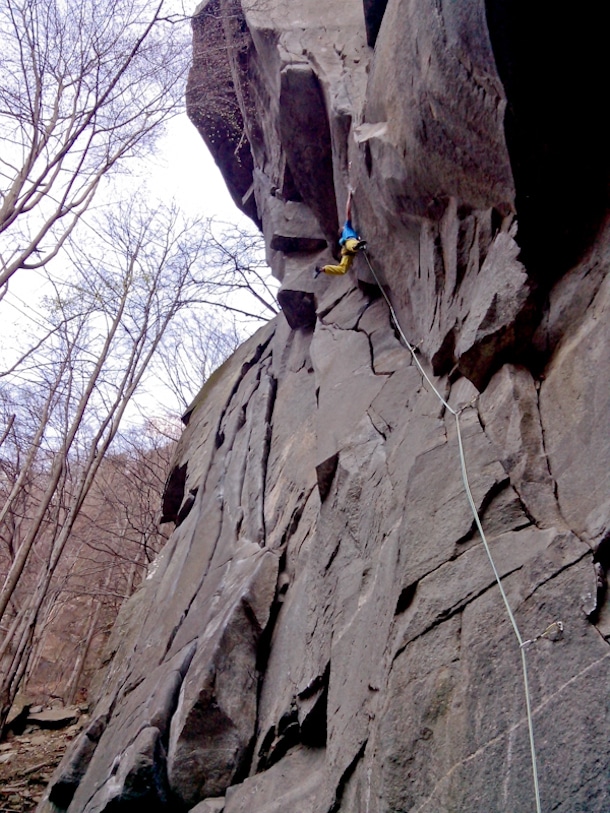
The result of all the hard work…
However, drilling wasn’t quite finished, as when I lowered off the route I realised not only that the line to the left would work, but that it would climb through one of the most perfectly sculpted granite features I had seen – a perfect crescent of rounded, smoothed, in-cut edges. Im not a fan of “grid-bolting and link-ups; I much prefer my lines to be independent, but this feature, and the moves around it were hard to resist.
The deciding factor was when I tried the moves and discovered them to be far easier than the previous line. A route passing here would be much more continuous than the direct version, which in my experience makes for a much nicer overall experience. I put in two more bolts to link in from the crack on the left, and climbed the route on my next try, to make a really great little 7C/+. Its hard to put a number on it as I think the first dyno to the crescent is quite reach dependant, but the number is not the important thing. The crux sequence is just awesome, and requires a series of strangely dynamic momentum moves on surprisingly big holds.
The one good thing about taking so long to bolt, was that the sun had come out and dried off Caroline’s project! She was scared and intimidated after having fallen and failed so many times whilst even clipping the bolts, but did a great job of surprising all those feelings, racking up, and getting the job done. Whilst the fact there are bolts to clip should you wish for them makes it difficult to give an authentic “E” grade, Caro felt it was her hardest trad route to day, and having already climbed 3 E8’s (Point Blank, The Jackals, My Piano) that should make it pretty tough indeed!
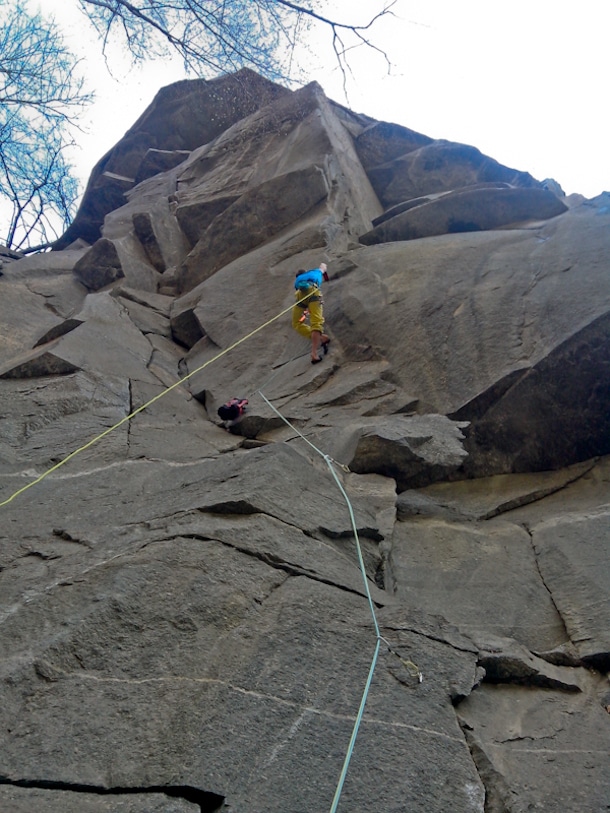
Caroline in the crux of Grazie Riky, 8a+ Trad. Check out the final run-out!
Belaying her was certainly exciting, as after you leave your final protection, you enter the crux sequence on small edges and run it out, 5 or 6 meters to the top! During this section, you can’t reach any of the remaining bolts, so its a real trad finale! She was obviously very tired during the final moves; you could hear her breathing hard, and see her shaking each arm between the individual moves as the ropes billowed out below her feet! I was nervous right up until she clipped into the belay, but then a shout of excitement/relief let me know everything was ok.
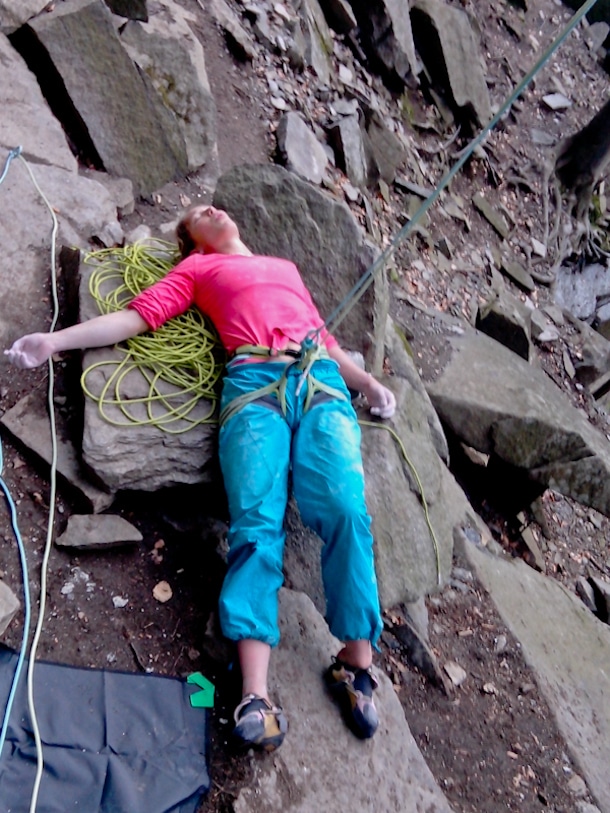
Caroline contemplating the next route…
A fine effort indeed, and I hope the sign of more hard trad to come in the next week should the weather improve.

